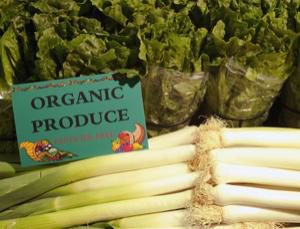 In a recent article for New Scientist, Michael Le Page is wrong to tell people not to eat organic if they care about the planet. He misreads the evidence, which shows organic farming is generally the better choice, writes the Soil Association’s Tom MacMillan
In a recent article for New Scientist, Michael Le Page is wrong to tell people not to eat organic if they care about the planet. He misreads the evidence, which shows organic farming is generally the better choice, writes the Soil Association’s Tom MacMillan
But he is also coming at this back to front. Models show that simply producing food more efficiently is not going to make a big enough, fast enough dent in greenhouse gas emissions (Bajželj et al., 2014). Rather, the big win comes from us eating a different mix of foods, particularly less but better meat. How can you find that better meat, fed mainly on grass and not on crops from deforested land? Look for an organic label.
Let’s unpack this. Work by Bojana Bajželj and colleagues (2014) shows that if we project current trends towards increased yields and demand through to 2050, then agriculture and land use change alone will account for almost all the emissions the world can afford if we are to avoid dangerous climate change. That would mean every other activity, from generating energy to transport and house-building, could emit no net GHGs.
Even really optimistic yield assumptions, which assume we pull something incredible out of the bag, leave agriculture and land use taking about three-quarters of the total emissions budget, and producing around 50% more GHGs than in 2009. Whatever happens with yields, the whole picture only starts to look plausible if we change what we eat, and how much food goes to waste. Changing both could get us down below 2009 emissions, even assuming yields stay on current trends. If we do better on yields, then so much the better, as we earn a little headroom.
Exactly what a climate-friendly diet looks like is much debated. There’s something close to consensus that following current dietary guidelines, which would mean eating a lot less meat than people average in the US and Europe, would be a big help (Garnett 2014). What type of meat? We know that growing crops for animal feed is a big driver of tropical deforestation. That feed goes largely to poultry, pigs and ruminants that could be eating grass instead. Meanwhile animals fed largely on grass and other forage can do a good job of using agriculture’s ‘ecological leftovers’ (Garnett 2014). There is therefore a strong case for making sure any meat and dairy you eat has been fed largely on forage. For most people reading Le Page’s article, an organic label will be the most reliable way of tracking this down.
Le Page’s excitement about GM is a red herring at best. For a start it is grown largely as a feed crop, so is implicated in the problem. In some of the world’s top soya-producing countries like the US, Brazil and Argentina, GM soya accounts for between 93-100% of total soya production, most of which is turned into animal feed. But there is also evidence that GM crops have had little if any productivity advantage, despite enthusiasts’ assumptions that they must.
What about everything else? Le Page acknowledges that organic farms have more wildlife. His main worry is that lower than average yields offset this. But the evidence suggests otherwise. Organic farms have an average 50% more wildlife versus a 20% lower yield. Le Page is wrong to suggest that organic food has a higher GHG footprint, according to a recent review of the evidence. Organic farming produces lower GHGs per hectare, even without taking into account higher carbon sequestration in organic systems. Adjusting for lower yields, there isn’t a consistent and significant difference between organic and non-organic foods per unit product (Knudsen et al. 2011). But which is the right measure? We should aim to halt forest destruction, reduce emissions per hectare and adjust what we eat towards the kind of diet such farming can sustain.
Meanwhile, the yield gap is closing. Organic yields can even out-perform non-organic in stressed conditions like droughts, and in developing countries. Organic farming can also improve our resilience to climate change. Crop rotations help build soil structure, improving water storage and reducing flood and drought potential. And that’s not to mention the fact organic certification assures the highest standards of animal welfare. If LePage wishes to find a climate friendly way of farming, he may want to reconsider organic. Organic farming does not have all the answers and there is more, even in organic systems, that can be done to reduce emissions and improve our impact on the environment. Nor does it let us off the hook from changing our diets. But it certainly can help, now and into the future, to achieve the best impact we can through those dietary choices.
Tom is Director of Innovation at the Soil Association. His role is to support continuous improvement in farming in line with organic principles. Before joining the Soil Association in 2011, Tom was Executive Director of the Food Ethics Council. He’s served on various advisory groups and boards, including the expert advisory panel for the UK Cabinet Office Food Matters report, ScienceWise, the BBSRC Science and Society Strategy Panel, and the boards of Sustain and the Brighton & Hove Food Partnership. His PhD investigated the use and abuse of science in food regulation.
This article was taken from the Soil Associations website

